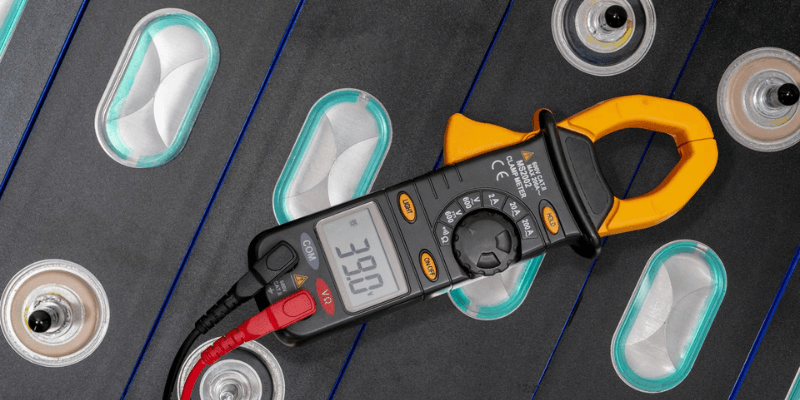Iibhetri, ukusuka kwilaptops kwizithuthi zombane, kufuna iqondo elifanelekileyo ngokusekwe kwi-chemistry yebhere. Malunga ne-50% yabathengi bethu bakhetha isisombululo sokutshaja ngokukhawuleza kweebhetri, kodwa i-1% iqonde ingozi yokutshaja ngokukhawuleza. Kweli phepha lebhlog, siya kuphonononga ukutshaja okukhawulezileyo kunye nokhuseleko lwayo lokhuseleko.
Yeyiphi i-chemistry yebhetri enza ukuba i-charmastry?
Ayizizo zonke iibhetri ezinokuthi zihlawulwe ngokukhawuleza. Ukuqonda ikhemistri yebhehetri, ukusetyenziswa kwamandla, kunye namaxabiso amaxabiso kuya kukunceda ufumane indlela efanelekileyo yokutshaja.
Khokelela kwi-acid yebhetri
Iibhetri ze-acid idla ngokucotha kancinci isebenzisa indlela ye-voltage rhoqo / ye-voltage. Itshaja igcina i-voltage yangoku kunye ne-voltage, imodareyitha yangoku kude kufikelele kwi-voltage yeseti, emva koko inciphise de ibhetri ihlawulwe ngokupheleleyo.
Kwiibhetri ezikhokelayo, intlawulo engapheliyo iyaqhubeka de kufikelelwe ngama-70%. Emva koko, itshaja inyukela phantsi kwangoku kwi-30% yokugqibela yevolthi, ebizwa ngokuba yintlawulo. Ngokungafaniyo nezinye iibhetri, iibhetri ze-Acid ezikhokelayo zinokuhlawulisa intlawulo yokuthintela ukungaphumeleli ukuba itshaja ixhasa olo khetho.
I-Nickel-esekwe kwibhetri esekwe kwibhetri
Iibhetri ezisekwe kwi-Nickel, ezinje nge-nimh kwaye zinokuhlawuliswa, zisebenzisa iindlela ngokukhawuleza, ezikhawulezayo, okanye ze-ultra. Iibhetri ezintsha zeNicled zifuna iyure ezili-16 ukuya kwezilixa ngaphambi kokusetyenziswa.
Zombini u-nimh kunye ne-nick sebenzisa i-charcal ye-chartages ye-volm. Nje ukuba ityala lizelwe ngokupheleleyo, i-voltage ihla kwi-trickled ntlawulo yokukhuphela ukuze ikhuphe.
I-Nigh Chargers iqesha indlela yokwahluka kwenqanaba. Bakhawulezisa ibhetri kude kube semnyango, emva koko banciphise inqanaba lokutshaja. Ibhetri kunye netshaja zithatha ixesha elipholileyo kumgangatho ngamnye ngaphambi kokuphinda-phinda ukutshaja.
I-Lithium bring
Nazi Iindidi ezintandathu zeLithium; I-LFP kunye ne-NMC zezona zisetyenziswa kakhulu.
Ngokwesiko, iibhetri LFP I-sharing ehamba kancinci, ngelixa Iibhetri ze-NMC zenzelwe ukubiza ngokukhawuleza. Nangona kunjalo, ukuphuculwa okuqhubekayo kwitekhnoloji yebhetri kuphuculwe ukusebenza okukhawulezileyo kwe-lithium yentsimbi phosphatele phosphatele.
Zombini i-LFP kunye neebhetri ze-NMC zisebenzisa a Inkqubo yoLawulo lwebhetri (ii-BMS) Ezo ntlawulo zetayimali ihlawulisa, ubushushu, kunye nezinye izinto zokushisa ngokumodareyitha kwaye zithintele ukuchasa okanye ukukhululwa ngaphezulu. Ngaphandle koku, ukonakaliswa kwebhetri okanye i-BMS isenokukhokelela kwimiba egqithisileyo.
Iibhetri zeLithium-ion akufuneki zigqithiselwe ngaphezulu. I-okwangoku kufuneka isuswe ngaphambi kokuba ibhetri ifikelela kwinqanaba eliphezulu, njengoko ukubiza ukutshaja kunokubangela ukubekwa kwe-itallic lithium, okukhokelela kwimiba yokhuseleko.

Izinto zokuqonda malunga nokutshaja ngokukhawuleza
I-Chargers yebhetri Sebenzisa i-voltage yebhetri kwibhetri.
Okwangoku sisixa sombane esiphuma kwitshaja kwibhetri, ngelixa i-voltage ngamandla ombane. I-Wattage ibalwa ngokuphindaphindiweyo kwaye yangoku.
Ngokutshaja ngokukhawuleza, Umvelisi wepakethe yebhetri inokulungelelanisa i-voltage okanye inqanaba langoku. Ukonyuka kwabantu abakhoyo kuvumela amandla angaphezulu kwebhetri. Ukuncipha kwe-voltage ngokusekwe kwinqanaba lebhetri nako kuqhelekile.
Nangona kunjalo, ukujikeleza ngokujikeleza kunemida kumandla abanokulawula. Ukugqitha kule mida kunokukhokelela ekuxhaseni, amaqondo obushushu aphezulu, kunye neminye imiba. Isixhobo, itshaja, kunye nentambo kufuneka zikwazi ukuphatha ukutshaja ngokukhawuleza.
Xa utshaba ngokukhawuleza, hlala usenza njalo kumaqondo aphakathi okanye amagumbi. Itshaja kufuneka itshintshele kwintlawulo eqhelekileyo njengoko ibhetri iyonwabisa kakhulu amandla okunciphisa uxinzelelo.
Iindidi zetshaja ezikhawulezayo
Zintathu iintlobo zetshaja ezikhawulezayo ngolu hlobo lulandelayo:
I-charger ezikhawulezayo
I-Rid Geclers Chargers kwi-0.3-0.5C (c ifutshane I-CAT). Bayeka okwangoku xa ubushushu, okwangoku, okanye i-voltage ibeka imida. Uluhlu lwamaqondo obushushu alondolozo lwale shargers yi-50-115 ° F. Kuthatha iiyure ezingama-3-5 ukufikelela kwityala elipheleleyo.
Iitshakazi ezikhawulezayo
Nge-1C biza, itshaja ekhawulezayo inokuhlawulisa ibhetri izele nge-1 iyure. Iqondo lokushisa licetyiswa kwi-50-115 ° f efana netshaja ekhawulezayo. Iya kuphelisa okwangoku xa ifikelela kwimida.
I-Ultra-ngokukhawuleza
I-Ultra-ikhankanya ekhawulezayo ixhasa ibhetri ekhethekileyo evumela amaxabiso entlawulo ukusuka kwi-1c ukuya kwi-10c, enika intlawulo epheleleyo kwimizuzu eli-10 ukuya kwengama-30. Nangona kunjalo, bahlawulisa ibhetri ukuya kwi-70% yemeko yentlawulo. Ukurhangqa amaqondo obushushu kufuneka ahlale phakathi kwe-50 ° F kunye ne-115 ° F.
Ukuqukumbela
Intlawulo esemgangathweni / amazinga okulahlekisa alunge kakhulu ekusebenzeni kwebhetri. Ukutshaja ngokukhawuleza kunokuphelisa ubomi bebhetri ngenxa yoxinzelelo olongeziweyo.
Ukuba ukutshaja ngokukhawuleza kuyafuneka, iibhetri ezinkulu nezinzima zilungile. Soloko unxibelelana ne Umvelisi webhetri Ukufumanisa ukuba ukutshaja ngokukhawuleza kukhuselekile kwaye kuyasebenza kwiimfuno zakho ezithile ngaphambi kokuphumeza isisombululo.
Amanqaku ayeleleneyo:

